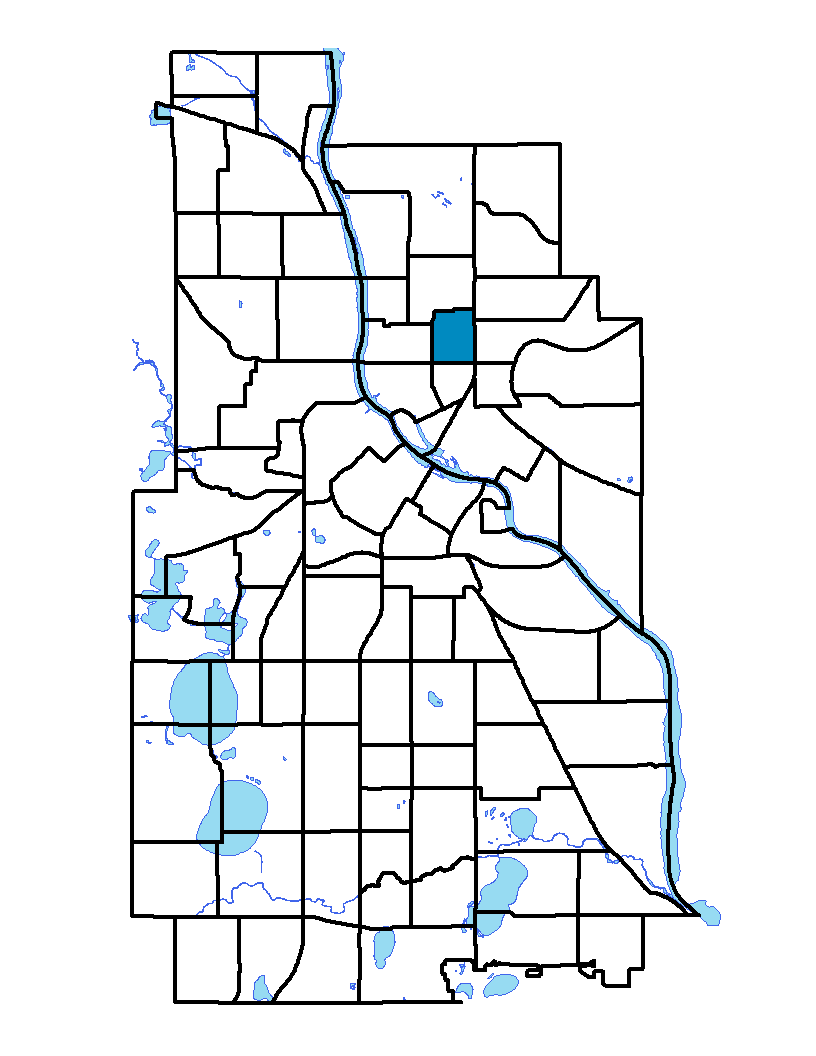Logan Park neighborhood in northeast Minneapolis is bound on the north by 19th Avenue Northeast, on the east by Central Avenue Northeast, on the south by Broadway Avenue Northeast and on the west by Washington Street Northeast. This 150-acre neighborhood is 40 percent residential with industry comprising nearly 30 percent and 11.5 percent dedicated to parks and recreational uses. The neighborhood has many large Victorian houses and is built around Logan Park, a square dating back to the 1800s and named for Civil War general and U.S. Sen. John A. Logan. Railroad tracks along Central Avenue divide the neighborhood into an industrial area and the residential district.
To learn more about the neighborhood association visit: www.loganparkneighborhood.org
Indicator Details
| Indicators | Primary Domain | Indicator Value |
Rank |
Tier |
|---|---|---|---|---|
| Proximity to Brownfield Sites | Environmental Hazards | 35.3% | 83 | Bottom |
| Tree Cover | Natural Areas | 24.0% | 82 | Bottom |
| Travel Time to Work | Employment Opportunities | 24.9 minutes | 81 | Bottom |
| Local Business Vitality | Economic Health | 43.9% | 75 | Bottom |
| Vacancy Rates | Housing | 13.1% | 73 | Bottom |
| Low Birth Weight | Health Systems and Public Safety | 12.4% | 73 | Bottom |
| Transit Accessibility | Transportation | 197.3 | 71 | Bottom |
| Adult Educational Attainment | Educational Opportunities | 79.5% | 71 | Bottom |
| Long-Term Unemployment | Employment Opportunities | 8.7% | 71 | Bottom |
| Public Assisted Households | Employment Opportunities | 40.0% | 68 | Bottom |
| Access to Mainstream Financial Services | Economic Health | 30.8% | 59 | Bottom |
| Preventable Hospitalizations | Health Systems and Public Safety | 4.1 | 59 | Bottom |
| Employment Rate | Employment Opportunities | 66.5% | 56 | Middle |
| Excessive Housing Cost Burden | Housing | 31.6% | 56 | Middle |
| Blood Lead Levels in Children | Housing | 5.3% | 54 | Middle |
| Toxic Releases from Facilities | Environmental Hazards | 14.7% | 53 | Middle |
| Voter Participation | Social Cohesion | 23.4% | 52 | Middle |
| Age of Housing | Housing | 89.2% | 51 | Middle |
| Violent Crime | Health Systems and Public Safety | 48.6 | 48 | Middle |
| Access to Parks and Open Space | Natural Areas | 5.1% | 45 | Middle |
| Walkability | Neighborhood Characteristics | 67 | 33 | Middle |
| Food Desert | Neighborhood Characteristics | 100.0% | 31 | Middle |
| Household Transportation Costs | Transportation | 16.0% | 30 | Middle |
| Pedestrian Connectivity | Transportation | 147.1 | 30 | Middle |
| Motor Vehicle Collisions | Health Systems and Public Safety | 3.4 | 29 | Top |
| Residential Mobility | Social Cohesion | 86.3% | 17 | Top |
| Commute Mode Share | Transportation | 39.3% | 17 | Top |
| Offsite Alcohol Outlets | Neighborhood Characteristics | 1 | 6 | Top |
| Business Retention | Economic Health | 7.0% | 4 | Top |
| Residential Proximity to Traffic | Environmental Hazards | 0.0% | 1 | Top |
| Proximity to Superfund Sites | Environmental Hazards | 0.0% | 1 | Top |
| Preschool Enrollment | Educational Opportunities | 100.0% | 1 | Top |
| Reading Proficiency | Educational Opportunities | -% | - | Data N/A |
| School Proximity to Traffic | Environmental Hazards | -% | - | Data N/A |
| Chronic School Absence | Health Systems and Public Safety | -% | - | Data N/A |
| High School Graduation Rate | Educational Opportunities | -% | - | Data N/A |
| School Readiness Scores | Educational Opportunities | -% | - | Data N/A |

